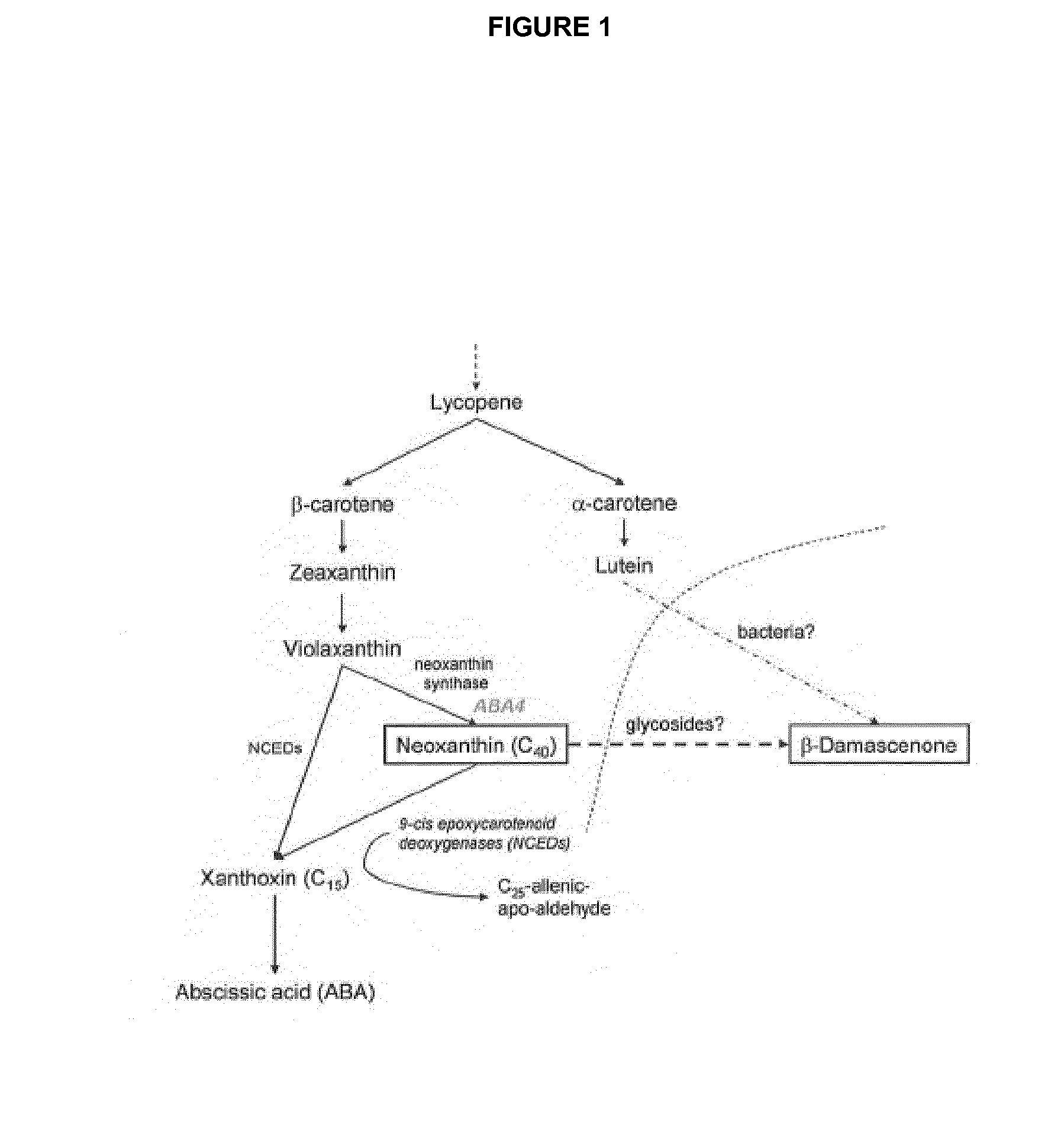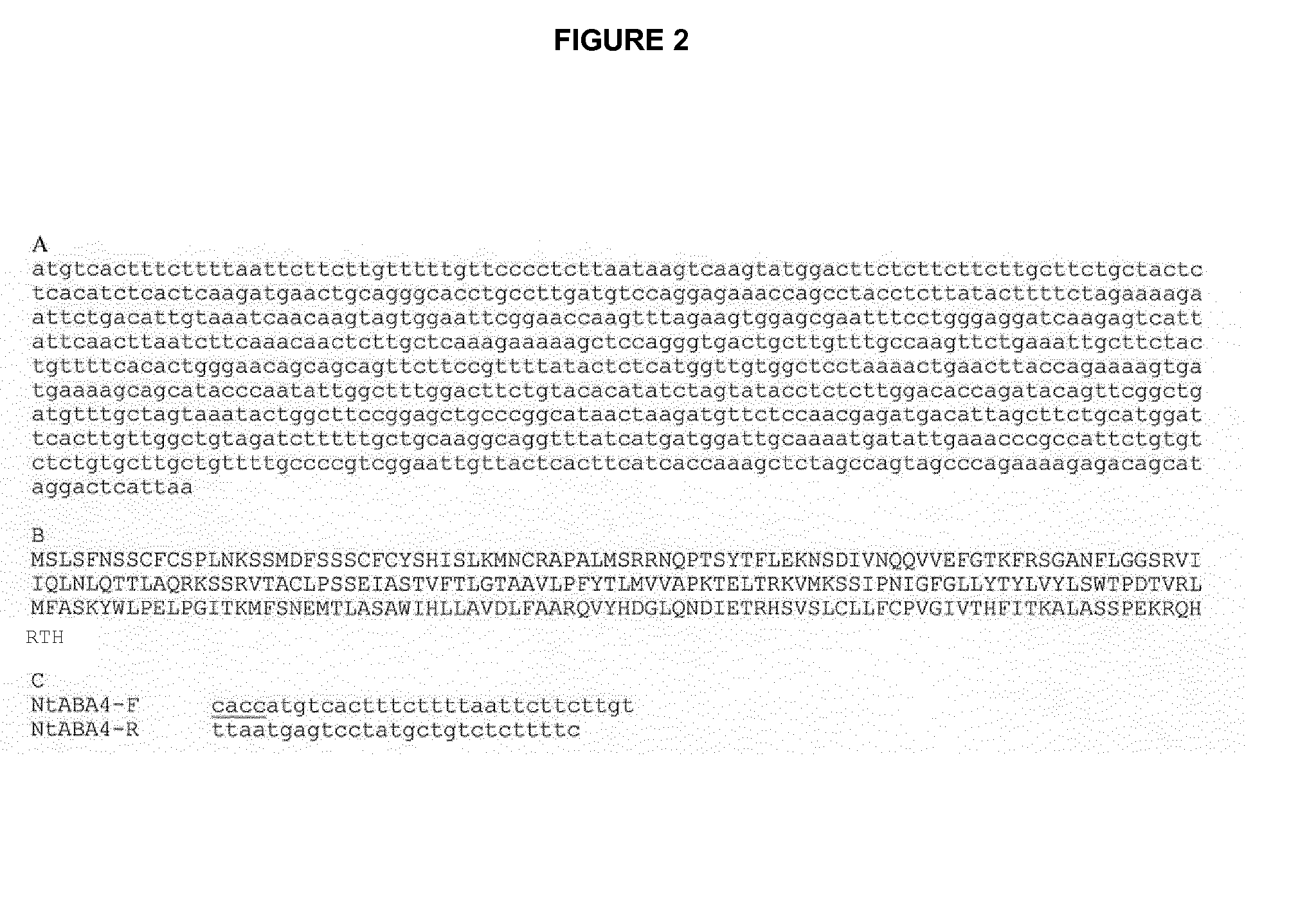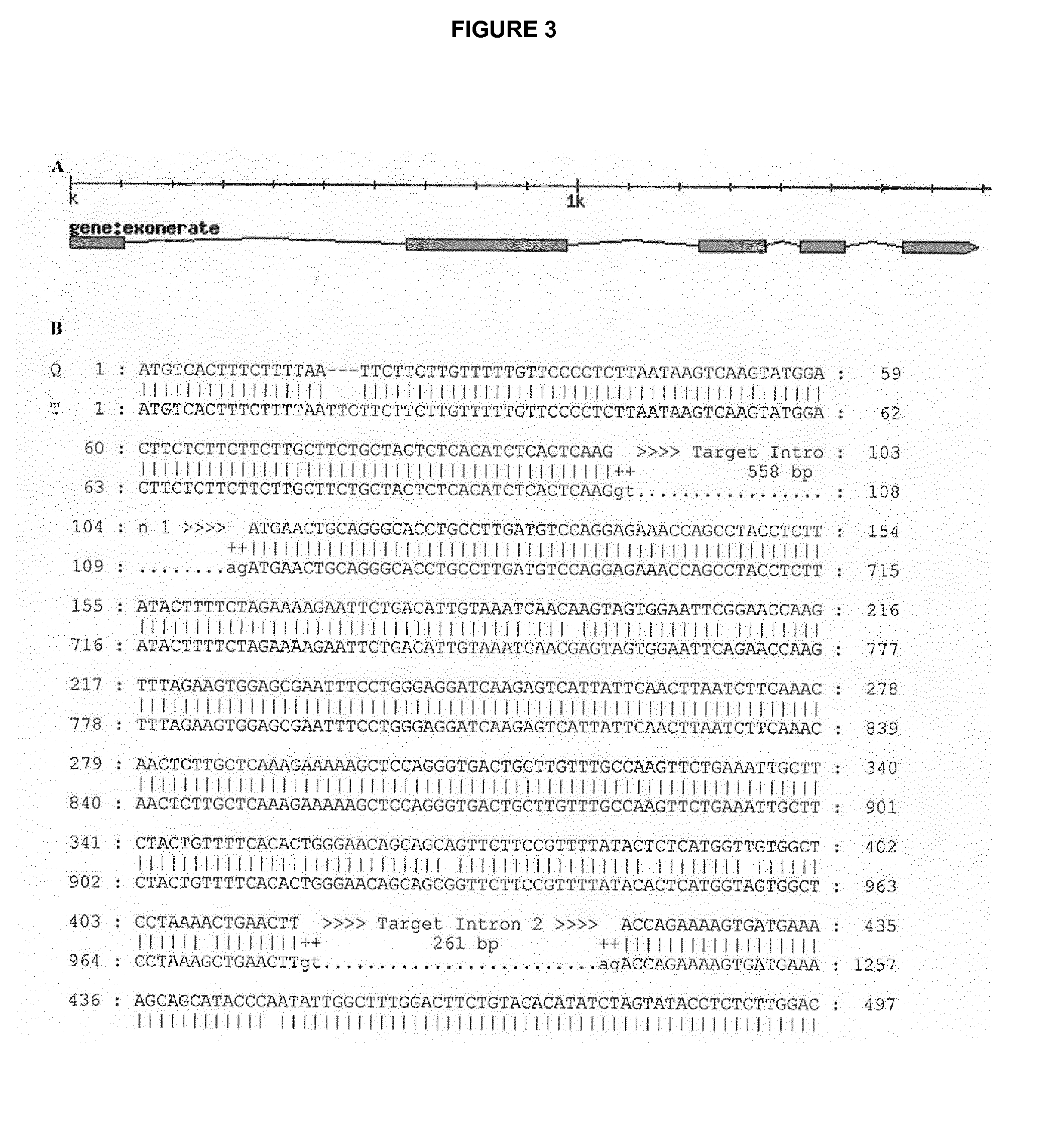Modulating beta-damascenone in plants
a technology of plant beta-damascenone and plant protein, which is applied in the field of polynucleotide, can solve the problems that the production of beta-damascenone has not been altered, and achieves the effects of increasing the expression of aba4 polynucleotide, and increasing the carotenoid conten
- Summary
- Abstract
- Description
- Claims
- Application Information
AI Technical Summary
Benefits of technology
Problems solved by technology
Method used
Image
Examples
example 1
Cloning of ABA4 from Nicotinia tabacum
[0238]A Nicotinia tabacum coding sequence homologous to ABA4 is ectopically expressed. The gene is called Nicotinia tabacum ABA4 (NtABA4) based on sequence homologies with A. thaliana ABA4. NtABA4 is a gene belonging to the extended “family” of neoxanthin synthase enzymes which catalyzes the formation of trans-neoxanthin from violaxanthin. The gene product is very likely to be localized in the plastids by analogy with AtABA4 and according to WoLFPSORT analyses. A full length coding sequence of 663 kb is identified and amplified using leaf K326 cDNA as PCR template, cloned into a pENTR Gateway vector (Invitrogen), sequenced and transferred into pK2WG7 (Gateway vector obtained from Flanders Interuniversity Institute for Biotechnology, Gent, Belgium) for constitutive expression in Nicotinia tabacum. The nucleotide and amino acid sequences of NtABA4 are set forth in SEQ ID No.1 and SEQ ID No. 2, respectively and in FIG. 2. NtABA4 displays 65% ident...
example 2
Cloning of Neoxanthin Synthase (NeSy) from Nicotinia tabacum
[0239]NeSy (lycopene beta cyclase), like ABA4, catalyzes the formation of neoxanthin (cis-neoxanthin) from violaxanthin (see FIG. 1). This enzyme is likely localized in plastids (based on homology to Arabadopsis thaliana NeSy). Starting with a sequence available in the TGI database, a full length coding sequence of 1482 kb (see FIG. 4) is amplified from K326 RNA, cloned in a pENTR Gateway vector (Invitrogen), sequenced and subcloned in the Gateway vector pK2WG7 (obtained from Flanders Interuniversity Institute for Biotechnology, Gent, Belgium) for over-expression. A BAC clone is identified. The genomic sequence present on this BAC clone shows that NtNeSy has no intron in the genomic structure and is very likely a single-copy gene in tobacco. NtNeSy K326 cDNA is constitutively expressed in TN90 under the control of the CaMV35S promoter for comparison with 35S::NtABA4 plants.
example 3
Cloning of 9-cis-epoxycarotenoid dioxygenase (CED2) from Nicotinia tabacum
[0240]CED2 (9-cis-epoxycarotenoid dioxygenase) catalyzes the cleavage of cis-neoxanthin in C25-allenic-apo-aldehyde and xanthoxin (see FIG. 1). NtCED2 shares strong homology with Arabidopsis AtNCED4, which is present in plastoglobules and likely cleaves neoxanthin in the leaf chloroplast. A tobacco cDNA fragment is identified in the TGI database. From this, a partial sequence (407 bp) is cloned in a pENTR Gateway vector (Invitrogen), sequenced and subcloned in the Gateway vector pK7GWIWG2(II), obtained from Flanders Interuniversity Institute for Biotechnology, Gent, Belgium. In this case, the NtCED2 fragment is expressed as a RNA hairpin in tobacco plants inducing gene silencing of the corresponding endogenous NtCED2 transcript (FIG. 5).
PUM
| Property | Measurement | Unit |
|---|---|---|
| Fraction | aaaaa | aaaaa |
| Fraction | aaaaa | aaaaa |
| Fraction | aaaaa | aaaaa |
Abstract
Description
Claims
Application Information
 Login to View More
Login to View More - R&D
- Intellectual Property
- Life Sciences
- Materials
- Tech Scout
- Unparalleled Data Quality
- Higher Quality Content
- 60% Fewer Hallucinations
Browse by: Latest US Patents, China's latest patents, Technical Efficacy Thesaurus, Application Domain, Technology Topic, Popular Technical Reports.
© 2025 PatSnap. All rights reserved.Legal|Privacy policy|Modern Slavery Act Transparency Statement|Sitemap|About US| Contact US: help@patsnap.com



